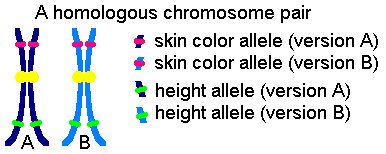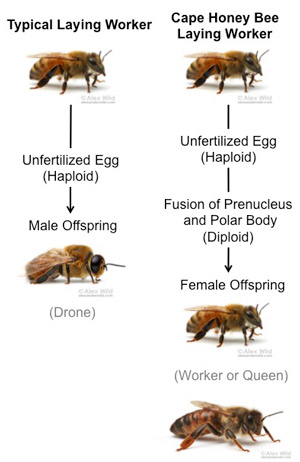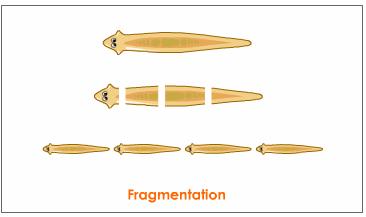Study Guide: https://quizlet.com/_1e3zvc
Unit 9: Cellular
Reproduction CONCISE Notes
1.
Cell Division
a. Growth,
repair, and reproduce
b. If
a cell grows too large, then it would take too long to get nutrients to all
parts of the cell and it would die
c. Cell
division is the process in which two cells are produced from one cell.
d. DNA
i.
DNA is in the form of chromatin during much of the cells life.
1. Chromatin
consists of long, thin, strands of DNA wrapped around proteins.
ii.
DNA is in the form of chromosomes during cell division.
1. Chromosomes
are strands of chromatin that have become tightly packed.
2. Sister
chromatids are the parts of a
chromosome - the original and a copy of a chromosome.
a. Sister
chromatids are held together by a centromere.
3. We
refer to the copied pair of chromatids as a homologous chromosome.
a. Each
chromatid is a chromosome.
iii.
Humans have 46 chromosomes (23 pairs of
chromosomes – the original and a copy of each) during mitosis, which is the
only time that chromosomes are visible.
 Know the parts of a chromosome
Know the parts of a chromosome
2. The Cell Cycle
a. The
order of events that occurs in the life of a cell
b. Controlled
by enzymes, which monitor the progress of the cell cycle through its phases
i.
The cell cycle may become out of control, either
through the failure to produce the correct enzymes or the production of enzymes
at the wrong time.
ii.
Enzyme production is controlled by genes located
on the chromosomes.
1. Gene
– segment of DNA that controls the production of a protein
iii.
Cancer
is one result of uncontrolled cell division (mitosis)
1. A
result of changes in one or more of the genes that produce enzymes that are
involved in controlling the cell cycle.
2. These
changes are expressed as cancer when something prompts the damaged genes into
action.
3. Cancerous
cells form masses of tissue called tumors
that deprive normal cells of nutrients.
4. Metastasis
is the process in which cancel cells enter the circulatory system a spread
throughout the body to different organs
5. Cancer
prevention – the second leading cause of death in the U.S. after heart disease
a. Lung,
Colon, Breast, and Prostate cancers most prevalent
b. Diet
low in fat and high in fiber – fruits, vegetables, and grains
c. Vitamins
and minerals – vitamins A, C, D, and calcium
d. Carotenoids
found in yellow and orange foods and green leafy vegetables
e. Daily
exercise
f.
Limit tobacco and other drug use
c. 3 Parts – interphase, mitosis,
cytokinesis

d.
Interphase
- The period of growth and development of a cell
i.
In a multicellular organism, the cell does its
particular job
ii.
Most of the cell’s life is spent in interphase - longest part of cell cycle
iii.
Three Parts of Interphase
1. G1 – (Growth 1) – the cell grows and
develops, making proteins, organelles double
2. S – (Synthesis) – DNA (chromatin) is
replicated (copied) resulting in twice amount of chromatin
3. G2 – ( Growth 2) – rapid growth,
preparing for division
e.
Mitosis
– Open mitosis - The division of the nucleus (Karyokinesis); Stages - PMAT - Paul Meets Anna Tonight
i.
Results in two cells that are identical
to the parent cell
ii.
Different in unicellular and multicellular
organisms
1. At
the end of mitosis, unicellular organisms remain as single organisms – this is
a form of reproduction
2. Multicellular
organisms create groups of cells called tissues that work together to perform a
specific function, which then form organs, then form systems, then the whole
organism
iii.
Fungi cells have a different way to complete
some of the steps of mitosis
iv.
4 Parts – Prophase, Metaphase, Anaphase,
Telophase
v.
Prophase
– Pair Up
1. Chromatin
condenses into chromosomes – now visible because they shorten and thicken – held together by centromere
2. Nucleolus
and nuclear membrane break down
3. In
animal cells, centrioles move apart
to opposite ends of the cell (to the poles)
a. Small,
dark, cylindrical structures made of microtubules
4. Spindle
fibers form
a. Made
from microtubules
b. Help
sister chromatids separate in Anaphase
vi.
Metaphase
- Middle
1. Chromosomes
line up in the center of the cell (in the equator)
2. Spindle
fibers attach to the centromere on each side of a chromosome, one for each
sister chromatid
vii.
Anaphase
- Away
1. Sister
chromatids are pulled apart at the centromere
2. The
chromatids move to opposite poles, pulled by the shortening spindle fibers
3. Cytokinesis
begins
viii.
Telophase
– Two New Nuclei
1. Two
identical sets of chromatids are now at each pole
2. The
chromatids begin to unwind into chromatin
3. Spindle
fibers and centrioles begin to breakdown
4. Two
new nuclear membranes form around the chromatin

ix.
Fungi
Mitosis
1. Closed mitosis - In
fungi, the nuclear membrane does not breakdown
2. All
of the stages of mitosis occur inside of the nucleus

f.
Cytokinesis
- The cytoplasm divides and
organelles are equally divided between two new cells
i.
The parent
cell splits into two new daughter cells
ii.
Different in plant and animal cells
1. Plant
cells form a cell plate between the new cells across the equator
a.
A cell membrane forms around each new cell
and new cell walls form on each side of the cell plate until separation is
complete, dividing the cell in half
2. Animal
cells pinch the cell membrane together along the equator
a.
A cleavage furrow develops as the animal
cell begins cytokinesis until both sides of the cell membrane meet and the cell
separates into two new cells
g.
The two new cells immediately enter
Interphase

h.
Mitosis Mistakes
i.
Usually occurs during metaphase and results in
one cell receiving (or missing) and extra chromosome
ii.
The cell may not function and die or may result
in a tumor (see 2iii)
3. The Cell Cycle of Sex Cells
a. Two
kinds of cells in organisms that sexually reproduce
i.
Somatic
cells – body cells – all cells except sex cells
1. Formed
from Mitosis.
2. Diploid (2n) - Contain all of the
chromosomes of the organism
a. Human
somatic cells contain 46 chromosomes (23 pairs)
i.
Homologous
Chromosomes (homologues)- The two chromosomes that make up each pair
1. One
of the pair came from the mother, the other from the father
2. One
may have the gene for blue eyes, while the other has the gene for brown eyes


ii.
Sex cells ( Gametes)
1. Formed
from Meiosis.
2. Haploid (n) - Contain half of the
chromosomes of the organism
a. Human
gametes contain 23 chromosomes

3. Two
Kinds – Sperm in males, Egg in females
a. Spermatogenesis
– the production of sperm cells
i.
One diploid cell produces four haploid sperm
cells
ii.
Meiosis I – a diploid sperm cell divides equally
producing two cells of equal size
iii.
Meiosis II – the two diploid cells divide again
resulting in four haploid spermatozoa (sperm) of equal size
b. Oogenesis
– the production of ova (egg cells) - ovum
i.
One diploid cell produces one haploid egg cell
and possibly four polar bodies
ii.
Meiosis I – a diploid cell egg cell divides
unequally producing one cell with most of the cytoplasm and cell organelles,
and a smaller cell
iii.
Meiosis II – the larger cell divides again a
larger haploid egg cell with most of the cytoplasm and organelles, and smaller
polar bodies that then disintegrate
Know these diagrams:
Know these diagrams:

iii.
Sexual Reproduction Overview
1. One
haploid sperm and one haploid egg merge together (fertilization) and form a zygote (fertilized egg that is diploid), resulting in one diploid cell
with 46 chromosomes
2. Fraternal
Twins – two eggs are fertilized separately (two different sperm) at the same
time that have a different set of chromosomes
3. Identical
Twins – one fertilized eggs splits and develops two babies that have the same
original set of chromosomes

b. Meiosis – the formation of sex cells (Reproductive cells)
i.
Two Parts – Meiosis I and Meiosis II, with 4
stages each - 8 stages total
1. Meiosis
I is similar to mitosis except that Synapsis occurs and Crossing Over
may occur
2. Meiosis
II is identical to Mitosis
ii.
Allows for genetic variation in a species
iii.
Produces haploid cells that are not identical
– they have half the normal number of
chromosomes
iv.
Meiosis I
1. Prophase
I
a. Chromatin
condenses into chromosomes – now visible
b. Spindle
fibers form
c. Centrioles
move to the poles
d. Nuclear
membrane disintegrates
e. Synapsis
– homologous chromosomes pair up
f.
Crossing Over may occur between non-sister
homologous chromosomes
2. Metaphase
I
a. Paired
homologous chromosomes move to the equator
b. Spindle
connects to the centromeres
3. Anaphase
I
a. Homologous
chromosomes move to opposite poles
4. Telophase
I
a. Spindle
disappears
b. Nuclear
membranes appear
c. Cell
pinches into two (cytokinesis) - 2 Haploid cells are made
v.
Meiosis
II – identical to mitosis – with the two cells from meiosis I
1. Prophase
II
a. Nuclear
membranes disappear
b. Spindle
forms
c. Centrioles
move to the poles
d. Chromatin
condenses into chromosomes
2. Metaphase
II
a. Non-homologous
chromosomes move to the equator
b. Spindle
attach to each sister chromatid
3. Anaphase
II
a. Spindle
pull sister chromatids to opposite poles
4. Telophase
II
a. Chromosomes
unwind into chromatin
b. Cell
membrane pinches - cytokinesis
c. 4
Haploid cells form
vi.
Meiosis
Mistakes
1. Trisomy
– an extra chromosome is present
a. Down
Syndrome – an extra chromosome number 21 – the zygote has 47 chromosomes
2. Monosomy
– missing a chromosome – most zygotes do not survive
4.
Asexual
Reproduction – new organism from one parent – genetically identical - usually with the same number of chromosomes
a. Usually
results in a large number of identical organisms which may increase the chances
of survival if the environment is stable
b. If
the environment is changing, then the chance of survival decreases because
there is no genetic variation
c. Only
requires one parent
d. Many
Types
i.
Binary Fission – a single cell splits in half –
how bacteria and many prokaryotes reproduce; also paramecium
ii.
Budding – s small area of cells attached to the parent
starts to grow and then detaches when it is a separate organism; many fungi and
simple animals like the Hydra reproduce by budding.
iii.
Vegetative Propagation - plants send out runners
that allow a new plant to grow, or cuttings from a plant can be rooted and
grown into mature plants.
iv.
Fragmentation – a small broken piece of an
organism grows into an adult; eg. Starfish
1. Regeneration
– regrowing a missing body part; eg. Starfish, planaria, sponges
v.
Parthenogenesis – an unfertilized egg develops
into an adult
1. Occurs
in some types of insects, some reptiles; eg. Drone honey bees
vi.
Spore formation – a spore grows into an adult
under favorable conditions; some algae, protozoans, plants, and fungi
1. Spore
- a reproductive cell with a tough outer covering – may be diploid or haploid
Budding:

Parthenogenesis:

Fragmentation:

Vegetative Propagation:

Binary Fission:

5.
Sexual Reproduction
a. Offspring
are genetically different from the parents, which may help them adapt
b. Offspring
are produced more slowly and in fewer numbers so fewer survive
c. Usually
requires two parents
Comparison of Mitosis and Meiosis

